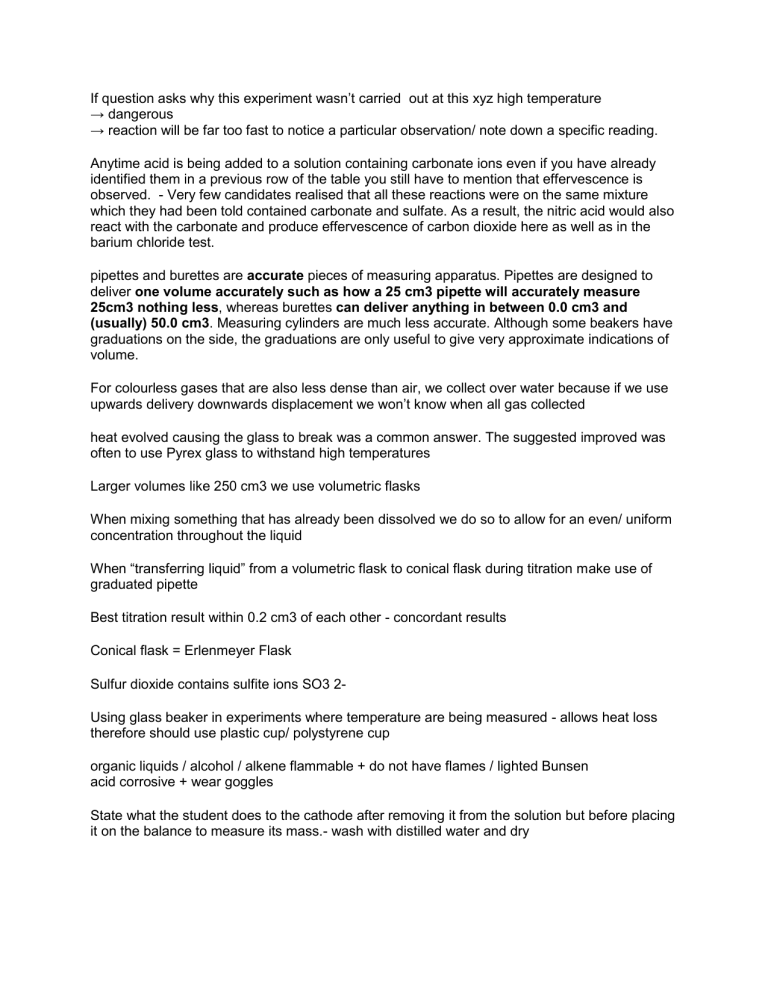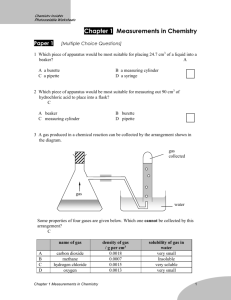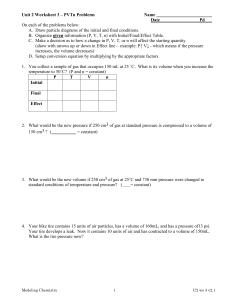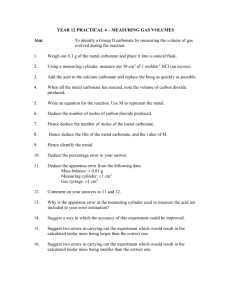
If question asks why this experiment wasn’t carried out at this xyz high temperature → dangerous → reaction will be far too fast to notice a particular observation/ note down a specific reading. Anytime acid is being added to a solution containing carbonate ions even if you have already identified them in a previous row of the table you still have to mention that effervescence is observed. - Very few candidates realised that all these reactions were on the same mixture which they had been told contained carbonate and sulfate. As a result, the nitric acid would also react with the carbonate and produce effervescence of carbon dioxide here as well as in the barium chloride test. pipettes and burettes are accurate pieces of measuring apparatus. Pipettes are designed to deliver one volume accurately such as how a 25 cm3 pipette will accurately measure 25cm3 nothing less, whereas burettes can deliver anything in between 0.0 cm3 and (usually) 50.0 cm3. Measuring cylinders are much less accurate. Although some beakers have graduations on the side, the graduations are only useful to give very approximate indications of volume. For colourless gases that are also less dense than air, we collect over water because if we use upwards delivery downwards displacement we won’t know when all gas collected heat evolved causing the glass to break was a common answer. The suggested improved was often to use Pyrex glass to withstand high temperatures Larger volumes like 250 cm3 we use volumetric flasks When mixing something that has already been dissolved we do so to allow for an even/ uniform concentration throughout the liquid When “transferring liquid” from a volumetric flask to conical flask during titration make use of graduated pipette Best titration result within 0.2 cm3 of each other - concordant results Conical flask = Erlenmeyer Flask Sulfur dioxide contains sulfite ions SO3 2Using glass beaker in experiments where temperature are being measured - allows heat loss therefore should use plastic cup/ polystyrene cup organic liquids / alcohol / alkene flammable + do not have flames / lighted Bunsen acid corrosive + wear goggles State what the student does to the cathode after removing it from the solution but before placing it on the balance to measure its mass.- wash with distilled water and dry In apparatus like this we START reaction by tipping/shaking conical flasks so acid and copper carbonate come in contact. We don’t directly add copper carbonate and then place bung because want to avoid any loss of gas → more accurate results This is a BOILING TUBE thicker than test tube When transferring washings (remaining solution left in pipette) we wash with distilled water OTHERWISE when using an apparatus to TRANSFER particular solution we use that soution to wash apparatus





